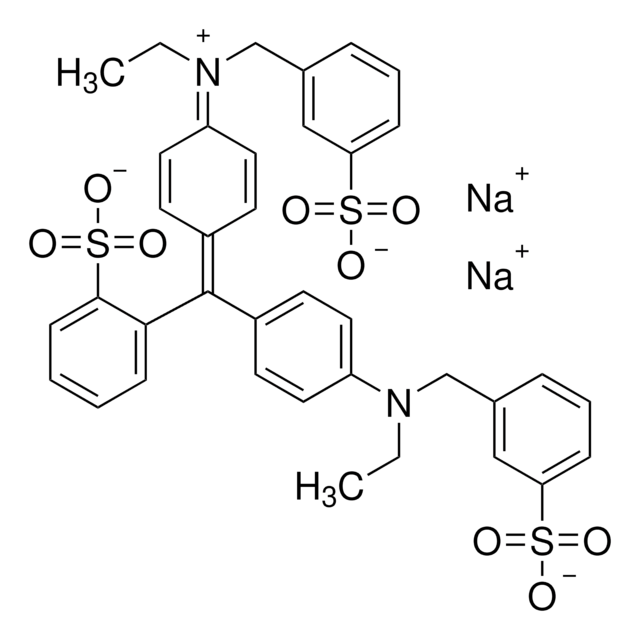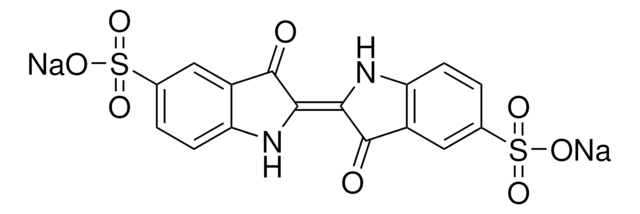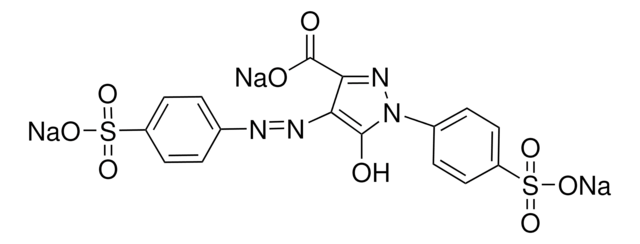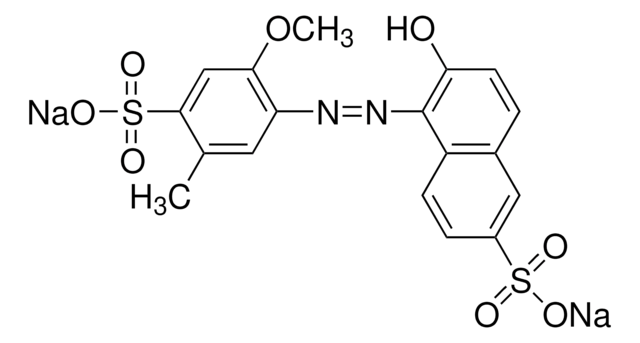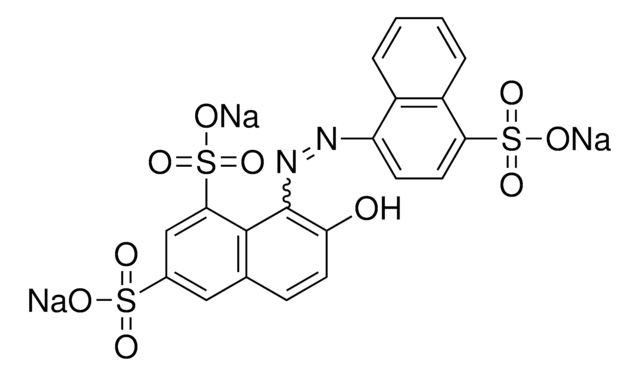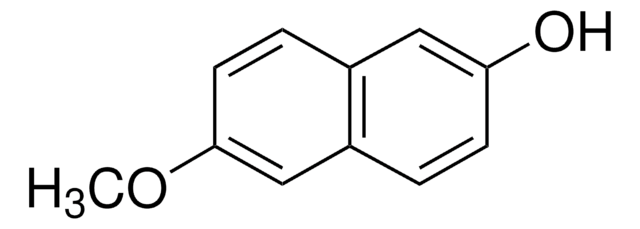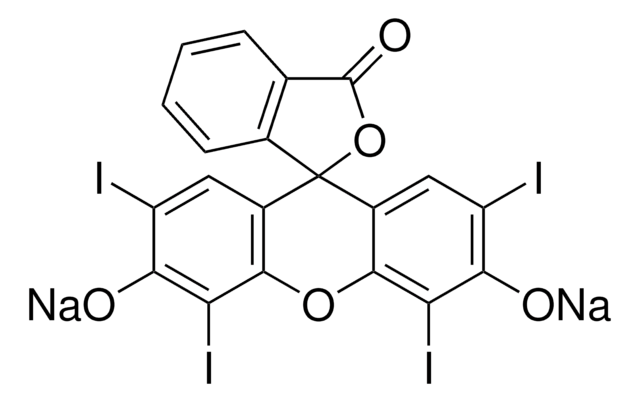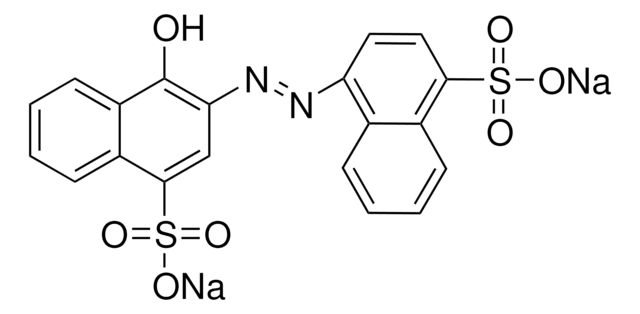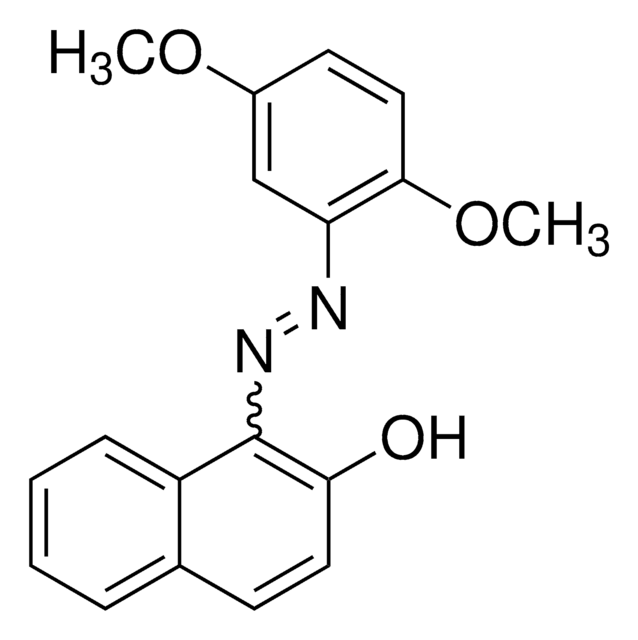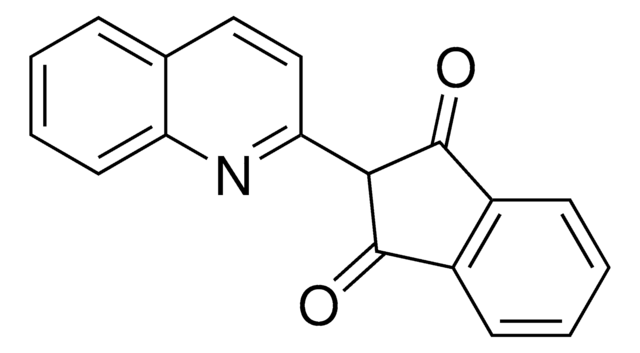68724
Fast Green FCF
analytical standard
Synonym(s):
Food green 3
About This Item
Recommended Products
grade
analytical standard
Quality Level
Assay
≥98.0% (HPLC)
technique(s)
HPLC: suitable
gas chromatography (GC): suitable
mp
290 °C (dec.) (lit.)
application(s)
cleaning products
cosmetics
food and beverages
personal care
format
neat
SMILES string
[Na+].[Na+].CCN(Cc1cccc(c1)S([O-])(=O)=O)c2ccc(cc2)C(=C3/C=CC(\C=C3)=[N+](\CC)Cc4cccc(c4)S([O-])(=O)=O)\c5ccc(O)cc5S([O-])(=O)=O
InChI
1S/C37H36N2O10S3.2Na/c1-3-38(24-26-7-5-9-33(21-26)50(41,42)43)30-15-11-28(12-16-30)37(35-20-19-32(40)23-36(35)52(47,48)49)29-13-17-31(18-14-29)39(4-2)25-27-8-6-10-34(22-27)51(44,45)46;;/h5-23H,3-4,24-25H2,1-2H3,(H3,41,42,43,44,45,46,47,48,49);;/q;2*+1/p-2
InChI key
RZSYLLSAWYUBPE-UHFFFAOYSA-L
Looking for similar products? Visit Product Comparison Guide
General description
Application
Packaging
Signal Word
Warning
Hazard Statements
Precautionary Statements
Hazard Classifications
Muta. 2 - STOT SE 3
Target Organs
Respiratory system
Storage Class Code
11 - Combustible Solids
WGK
WGK 2
Flash Point(F)
352.4 °F - closed cup
Flash Point(C)
178 °C - closed cup
Choose from one of the most recent versions:
Certificates of Analysis (COA)
Don't see the Right Version?
If you require a particular version, you can look up a specific certificate by the Lot or Batch number.
Already Own This Product?
Find documentation for the products that you have recently purchased in the Document Library.
Customers Also Viewed
Protocols
Separation of Tartrazine; Amaranth; Indigo carmine; New Coccine; Sunset Yellow FCF; Allura Red AC; Fast Green FCF; Erioglaucine disodium salt; Erythrosin B sodium salt; Phloxine B; Rose bengal
Our team of scientists has experience in all areas of research including Life Science, Material Science, Chemical Synthesis, Chromatography, Analytical and many others.
Contact Technical Service
